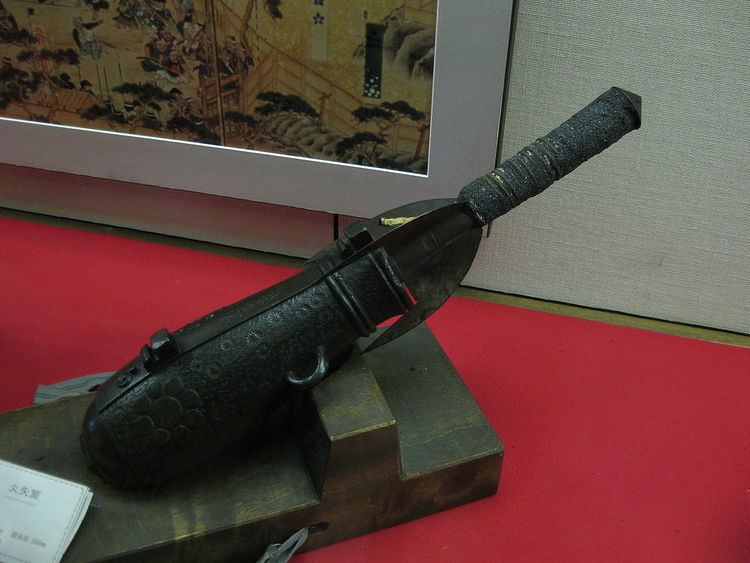 | ||
Fire arrows are an early form of gunpowder solid fuel rocket which were attached to a shaft of the arrow to provide a propulsive force. The Chinese are credited with both the invention of the fire arrow and also the first use of fire arrows in a military warfare. The Chinese developed fire arrows from their previous invention of fireworks and gunpowder.
Contents
Design
The Fire Arrow was the first rocket in mechanism and design. It was made in a variety of forms and launched in diverse manners, but the first design consisted of a pouch of black powder with a stick attached; the arrows were launched from a stand of bamboo sticks. Like the fins on a modern rocket, the long stick on a fire arrow increases stability and therefore accuracy. (It works by causing the center of drag to be far behind the center of mass, so that atmospheric drag keeps the arrow oriented toward its direction of travel.)
Chinese and Korean fire arrows were usually launched in salvoes from launch platforms, such as arrays of cylinders or boxes which could hold as many as 1,000 fire arrows each. The fire arrows propelled by gunpowder may have had a range of up to 1,000 feet.
Fire arrows were tipped with flammable materials such as pitch, bitumen, or resin.
Chinese fire arrow
Fire arrows were first reported to be used by the Southern Wu in 904 during the siege of Yuzhang. The Wujing Zongyao, or Complete Compendium of Military Classics, published in 1044, said that in 994 A.D. the Chinese city of Tzu T'ung was attacked by an army of 100,000 men, the attacking army was routed by regular war machines and fire arrows.
Other recorded uses were during the Jin–Song wars between the Song and Jin dynasties in:
The Mongols, against whom the Chinese had primarily used the weapon, also made use of the fire arrow during their campaigns in Japan. As a result of the Mongolian military campaigns the fire arrow later spread into the Middle East.
Korean fire arrow
Gunpowder and knowledge of rocketry were introduced to Korea through China, and eventually evolved into the singijeon. In the late 14th century a type of fire arrow called hwajeon or hwajon were used against Japanese pirates (wokou also, kaizoku or wako) by the Korean navy. Korean fire arrows were used against the Japanese during the invasion of Korea (1592).
Japanese fire arrows
The Japanese version of the fire arrow were known as bo-hiya. Japanese pirates (wokou also, kaizoku or wako) in the 16th century were reported to have used bo hiya. Bo-hiya had the appearance of a large arrow, a burning element made from incendiary waterproof rope was wrapped around the shaft, when lit the bo-hiya was fired from a wide bore tanegashima (Japanese matchlock) or a mortar-like weapon (hiya taihou). During one sea battle it was said the bo-hiya were "falling like rain".
